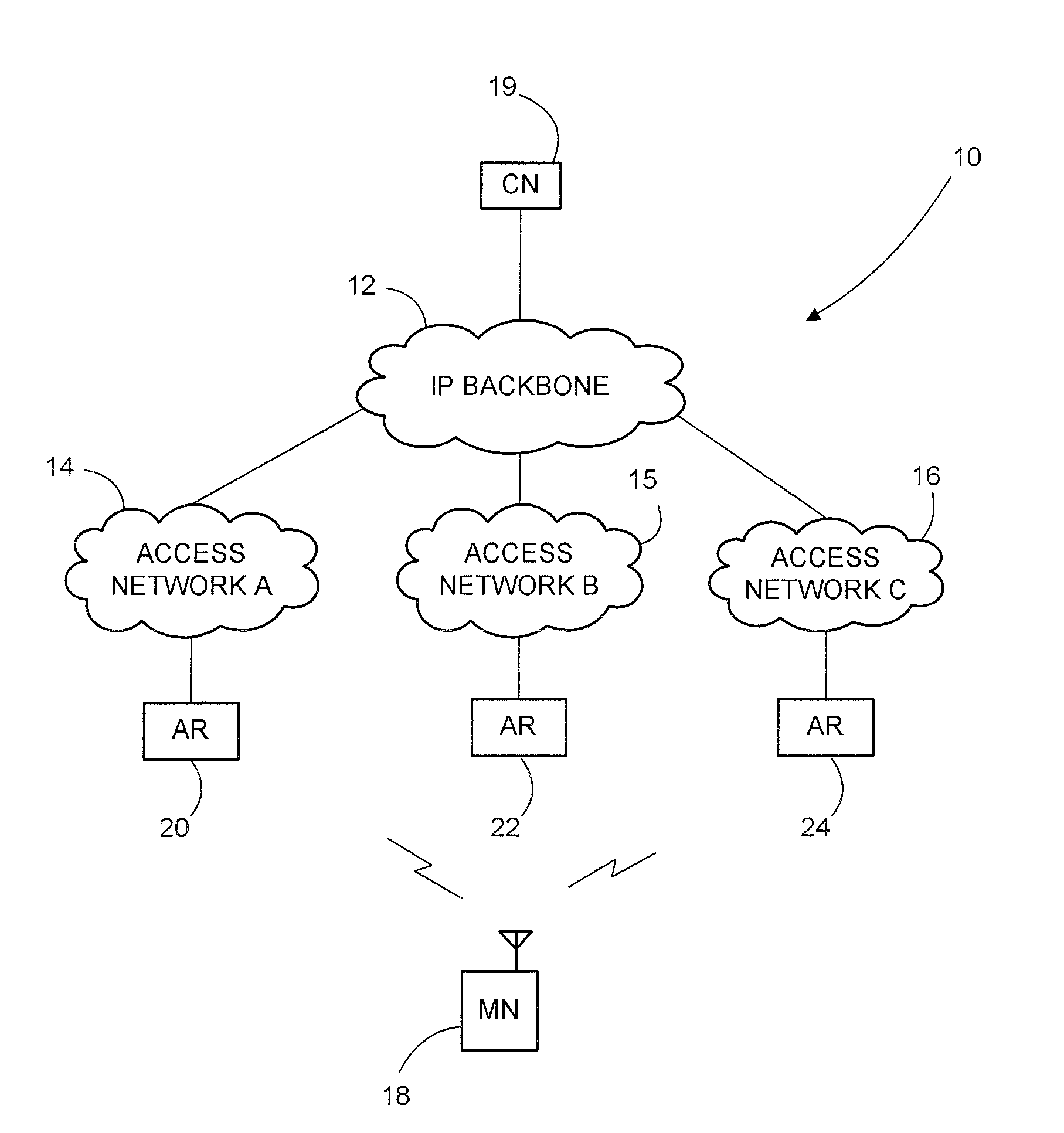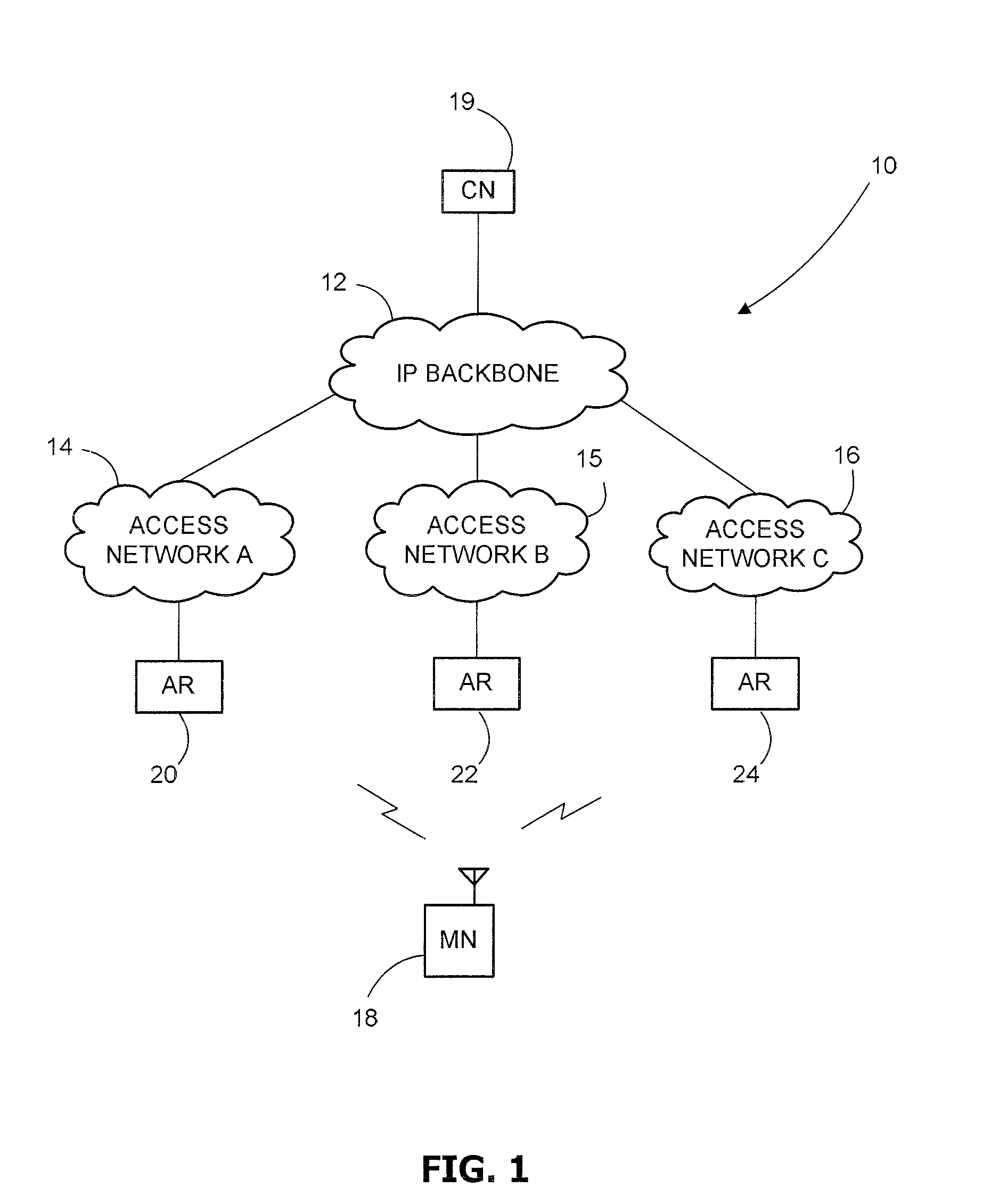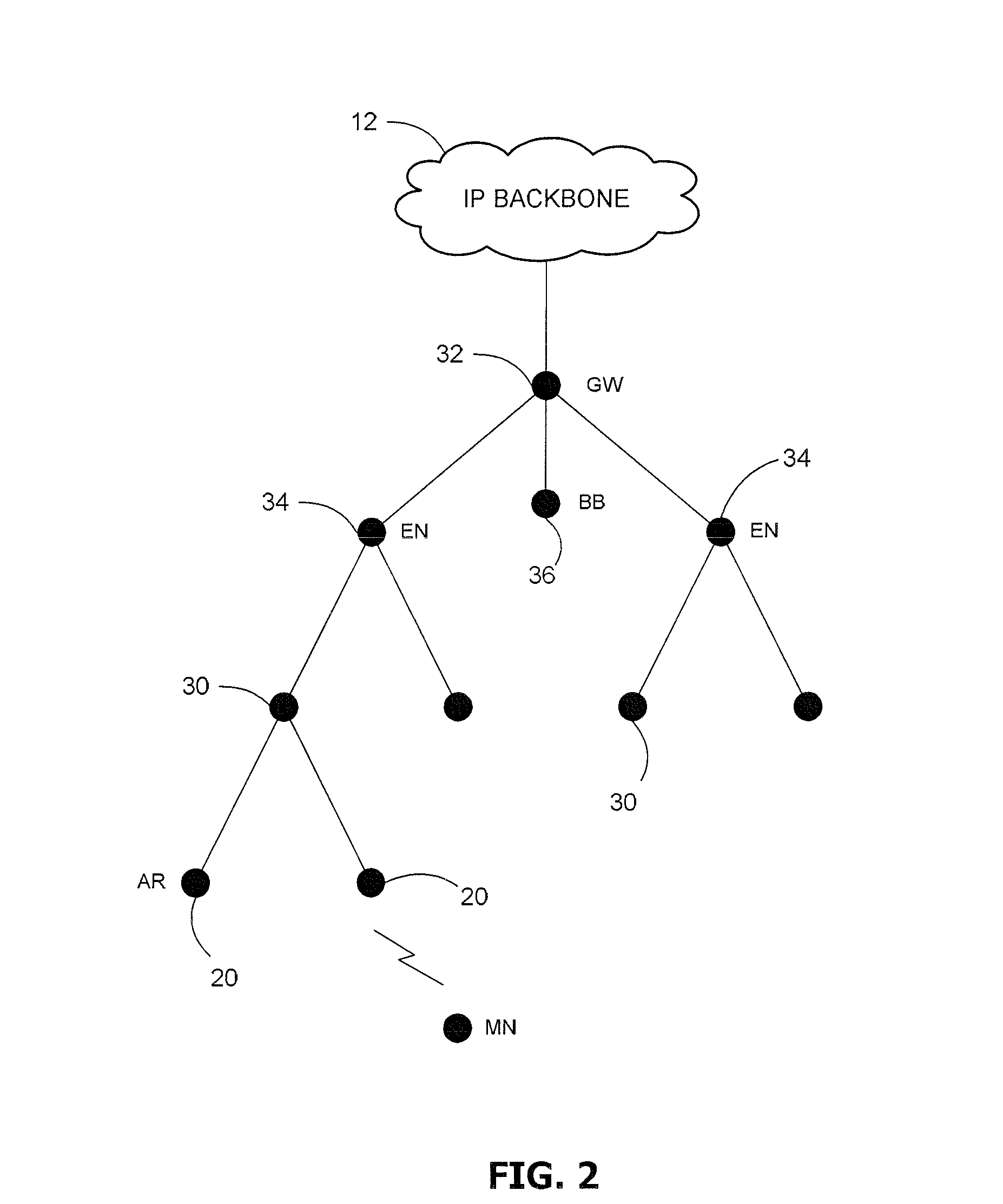Packet-Switched Access Networks
a packet switching and access network technology, applied in data switching networks, frequency-division multiplexes, instruments, etc., can solve problems such as unfavorable packet switching, unplanned delay and loss of packets, and inability to perform this frequently (e.g. every few minutes) and achieve the effect of reducing congestion and reducing congestion
- Summary
- Abstract
- Description
- Claims
- Application Information
AI Technical Summary
Benefits of technology
Problems solved by technology
Method used
Image
Examples
Embodiment Construction
)
[0066]Referring to FIG. 1 an IP-based (IPv4 or IPv6 or a mixture thereof may be used in any of the networks mentioned herein) network environment generally identified by reference numeral 10 comprises an IP backbone 12 having a number of interconnected routers that provide access for network nodes to data and services stored on remote servers for example. As such the IP backbone 12 may form part of the Internet. In this embodiment any of three IP-based access networks 14, 15, 16 provide access for a wireless mobile node (MN) 18 to the IP backbone 12, although there may be any number of access networks and mobile nodes of course. The access networks 14, 15, 16 may be an IP-based cellular network (such as 3GPP Release 5 or 6, UMTS Long Term Evolution (LTE) or any future IP-enabled cellular network) or the combination of an ISP and a number of WLAN routers for example. Access to the IP backbone 12 enables the MN 14 to communicate with a correspondent node (CN) 19. The CN 19 may be a m...
PUM
 Login to View More
Login to View More Abstract
Description
Claims
Application Information
 Login to View More
Login to View More - R&D
- Intellectual Property
- Life Sciences
- Materials
- Tech Scout
- Unparalleled Data Quality
- Higher Quality Content
- 60% Fewer Hallucinations
Browse by: Latest US Patents, China's latest patents, Technical Efficacy Thesaurus, Application Domain, Technology Topic, Popular Technical Reports.
© 2025 PatSnap. All rights reserved.Legal|Privacy policy|Modern Slavery Act Transparency Statement|Sitemap|About US| Contact US: help@patsnap.com



